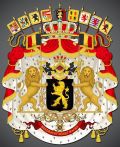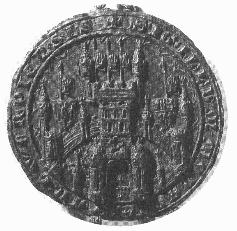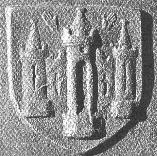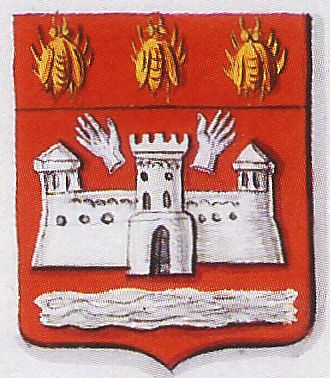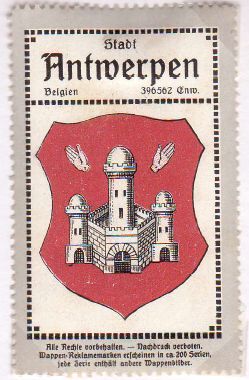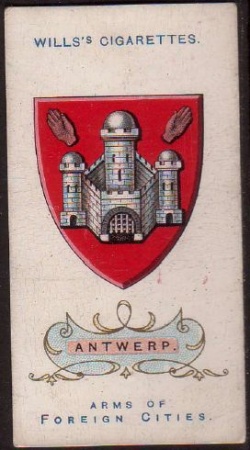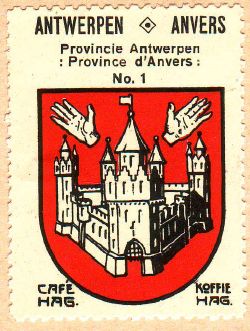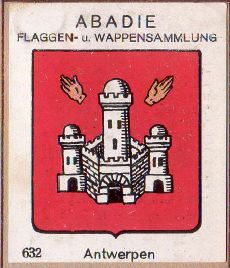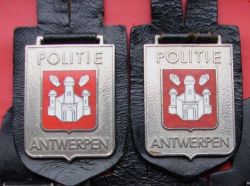Antwerpen: Difference between revisions
Knorrepoes (talk | contribs) m (Text replace - "{|width="100%" style="color:black; background-color:#ffffcc;" |width="15%"|50 px|left |width="70%" align="center" |'''Heraldry of the World<br/>Civic heraldry of Belgium - Belgische Gemeentewapens / [[B) |
Knorrepoes (talk | contribs) No edit summary |
||
| Line 1: | Line 1: | ||
{{be}} | {{be}}<seo title="Wapen van Antwerpen - Coat of arms of Antwerp - Armoiries d'Anvers" titlemode="append"></seo> | ||
'''ANTWERPEN''' | '''ANTWERPEN''' | ||
Revision as of 08:25, 8 July 2015
Belgium heraldry portal
This page is part of the Belgium heraldry portal |
Heraldry of the World |
|
Civic heraldry:
|
Other heraldry: |
ANTWERPEN
Province : Antwerpen
Additions : 1929 Oorderen, Oosterweel, Wilmarsdonk; 1958 Berendrecht, Lillo, Zandvliet; 1982 Berchem, Borgerhout, Deurne, Ekeren, Hoboken, Merksem, Wilrijk
Official blazon
- (1810) De gueules au château de trois tours d'argent, celle du milieu crénelée de cinq pièces, ouvert, ajouré et maçonné de sable, surmonté de deux mains appaumées, celle à dextre en bande, celle à senestre en barre d'argent et soutenu d'une rivière en fasce alaisée du même, au chef cousu de nos bonnes villes qui est de gueules à trois abeilles en fasce d'or.
- (1818) Van keel beladen met een kasteel met drie torens en verzeld aan het hoofd van het schild door twee uitgestrekte handen, alles van zilver, Het schild gedekt door eene gouden kroon van vijf fleurons.
- (1881) De gueules au château à trois tours crénelées s'argent ouvertes, ajourées et maçonnées de sable, la tour du milieu accompagnée en chef de deux mains appaumées, celle à dextre, en bande, celle `senestre, en barre. L'écu ayant pour tenants un homme et une femme sauvages de carnation, ceints et couronnés de lierre et portant deux massues posées sur les ápaules let tenants soutenus de sinople. L'écu étant entouré d'une couronne ou chapeau de six roses dont trois d'argent et trois de gueules, toutes boutonnées d'or et sommé d'une couronne de marquis.
- (1985) In keel een burcht met drie geopende, gekanteelde torens van zilver, verlicht en gemetseld van sabel, de middelste toren in het schildhoofd vergezeld rechts van een schuingeplaatste rechterhand en links van een linksschuingeplaatste linkerhand, beide van zilver. Het schild omringd door een bladerkrans met zes rozen, afwisselend van zilver en van keel, alle geknopt van goud en gepunt van sinopel, overtopt door een markiezenkroon en gehouden door een wildeman en een wildevrouw van vleeskleur, omgord en gekroond met klimopbladeren van sinopel en dragend op de schouder een knots van natuurlijke kleur, beiden staande op een losse grasgrond.
Origin/meaning
The first arms were granted in 1810 by Napoléon. In 1818 the arms were changed and granted by the Dutch government. In 1881 the current arms were granted, which were confirmed in 1985.
The town probably got city rights at the end of the 12th or beginning of the 13th century. The oldest seal of the city dates from 1239 and shows a castle. On top of the castle some flags bearing a hand can be seen. The second great-seal of the city also shows the hands on flags or banners.
| The great seal of Antwerpen from 1302 |
The oldest arms of the city date from 1459 and are cast in one of the bells of the cathedral. It shows again a castle, but the hands are now reduced to two, one on each side of the castle, and are not placed on flags anymore.
| The arms on the bell from 1459 |
In the 16th century the supporters and other attributes appear. In the 16th century the city also used themotto 'Fortunata Antverpia', which disappeared at the end of the century again.
The roses appear in 1515 and they probably refer to the different courts and freedoms of the city : the high court, the civil court, the feudal court, the freedom of the castle, the citizenship of the city and free passage on the river Schelde. Other sources refer to the six virtues : patience, loyalty to the monarch, generosity towards the poor, gentleness, comfort and grace.
During many centuries the arms were shown on buildings with the Imperial eagle above the city arms, which were actually the arms of the Margraviate of Antwerpen (see the provincial arms).
| The arms on the city hall (source) |
The arms were changed in Napoleonic times, when the arms were augmented with a chief of cities of the first class, three bees. Also, in base a river was added to the arms.
| The arms from 1810 |
In 1818 the arms were granted without the chief and river, but also without the historical supporters. The supporters were finally granted in 1881.
| The arms from 1818 |
The present arms were confirmed on March 5, 1985 ithout any change.
The arms used on collector's items
| The arms in the Continentale Verlags-Anstalt album, +/- 1910 |
The arms shown around 1900-1910 |
The arms on a British tobacco card, 1912 |
| The arms in the Koffie Hag/Café Hag albums +/- 1930 |
The arms in the Abadie albums |
The arms by Lonka sweets, 1960s |
| Police badges(source) |
Contact and Support
Partners:
Your logo here ?
Contact us
© since 1995, Heraldry of the World, Ralf Hartemink 
Index of the site
Literature : Vries, H. de : Wapens van de Nederlanden, Amsterdam, 1995; Viane-Awouters and Warlop. 2002
